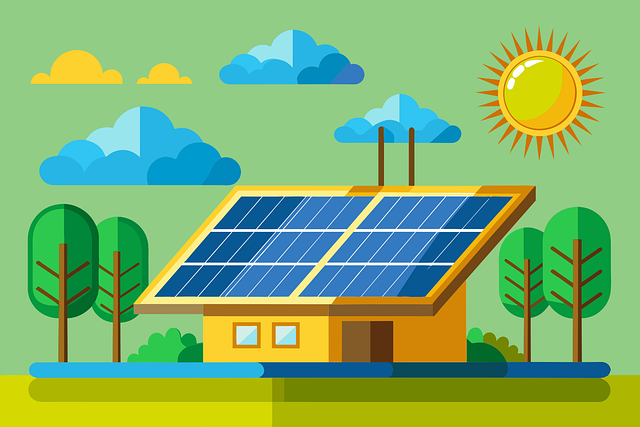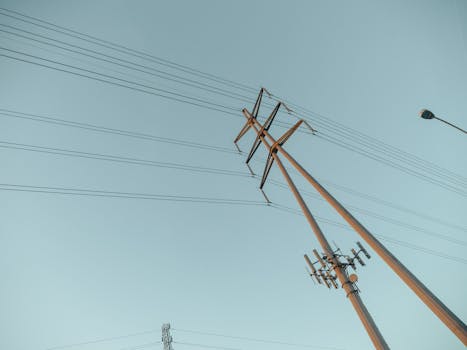“Connecting Power: The Essential Role of Wiring in Solar Energy Storage.”
Wiring plays a crucial role in solar energy storage systems, serving as the backbone for efficient energy transfer and management. It connects solar panels to inverters, batteries, and the electrical grid, ensuring that generated energy is effectively captured, stored, and utilized. Proper wiring design and installation are essential for optimizing system performance, minimizing energy losses, and enhancing safety. Additionally, the choice of materials and configurations can significantly impact the overall efficiency and reliability of solar energy storage solutions, making wiring a fundamental component in the integration of renewable energy technologies.
Wiring Efficiency in Solar Energy Storage Systems
Wiring efficiency plays a crucial role in the overall performance of solar energy storage systems, impacting both energy transfer and system longevity. As solar energy becomes an increasingly popular choice for sustainable power generation, understanding the intricacies of wiring in these systems is essential for optimizing energy storage and ensuring reliable performance. The wiring in solar energy systems serves as the conduit through which electricity flows from solar panels to batteries and ultimately to the end-user. Therefore, the quality and configuration of this wiring can significantly influence the efficiency of energy transfer.
One of the primary factors affecting wiring efficiency is the gauge of the wire used in the system. Thicker wires, or those with a lower gauge number, have less resistance, which allows for more efficient energy transfer. Conversely, using wires that are too thin can lead to increased resistance, resulting in energy loss in the form of heat. This loss not only reduces the overall efficiency of the solar energy system but can also lead to potential overheating issues, which may compromise the safety and longevity of the components involved. Consequently, selecting the appropriate wire gauge is vital for maximizing energy transfer and minimizing losses.
In addition to wire gauge, the length of the wiring runs also plays a significant role in efficiency. Longer wire runs can lead to greater resistance, which can diminish the amount of energy that reaches the storage system. To mitigate this issue, it is advisable to minimize the distance between solar panels and batteries whenever possible. By strategically placing components and using shorter wiring runs, system designers can enhance efficiency and ensure that more of the generated solar energy is effectively stored for later use.
Moreover, the type of wiring insulation can impact performance as well. High-quality insulation materials can help reduce energy loss due to environmental factors, such as temperature fluctuations and moisture. For instance, wires with UV-resistant insulation are better suited for outdoor applications, where exposure to sunlight can degrade lower-quality materials over time. Additionally, using insulated wiring that can withstand high temperatures is essential for maintaining performance in hot climates, where overheating can become a significant concern.
Furthermore, the configuration of the wiring system is another critical aspect that influences efficiency. Properly designed wiring layouts can help minimize voltage drop, which occurs when the voltage at the end of a wire run is lower than at the beginning. This drop can be particularly problematic in larger systems, where multiple panels and batteries are interconnected. By employing techniques such as parallel wiring configurations, system designers can reduce voltage drop and enhance overall efficiency.
In conclusion, wiring efficiency is a fundamental component of solar energy storage systems that directly affects energy transfer, system performance, and longevity. By carefully considering factors such as wire gauge, length, insulation type, and configuration, designers and installers can optimize the efficiency of these systems. As the demand for renewable energy continues to grow, understanding the role of wiring in solar energy storage will be essential for maximizing the benefits of solar technology. Ultimately, investing in high-quality wiring solutions not only enhances the performance of solar energy systems but also contributes to a more sustainable and efficient energy future.
The Importance of Proper Wiring for Battery Safety

In the realm of solar energy storage, the significance of proper wiring cannot be overstated, particularly when it comes to ensuring battery safety. As solar energy systems become increasingly prevalent, understanding the intricacies of wiring is essential for both efficiency and safety. The wiring in a solar energy system serves as the backbone that connects various components, including solar panels, inverters, and batteries. When these elements are interconnected correctly, they work harmoniously to store and distribute energy effectively. However, improper wiring can lead to a host of safety issues, including short circuits, overheating, and even fires.
One of the primary concerns with battery safety in solar energy systems is the risk of overcharging. When batteries are charged beyond their capacity, they can become unstable, leading to thermal runaway—a condition where the battery temperature rises uncontrollably. This scenario is often exacerbated by inadequate wiring, which may not be able to handle the current flowing through the system. Therefore, using appropriately sized wires is crucial. Wires that are too thin can overheat, creating a fire hazard, while wires that are too thick may be unnecessarily costly and cumbersome. The right gauge of wire ensures that the system operates within safe limits, minimizing the risk of overheating and potential failure.
Moreover, the quality of the wiring materials plays a vital role in battery safety. Copper is the most commonly used material due to its excellent conductivity and durability. However, not all copper wires are created equal; the presence of impurities can affect performance. Using high-quality, stranded copper wire can enhance flexibility and reduce the risk of breakage, which is particularly important in installations where wires may be subject to movement or vibration. Additionally, proper insulation is essential to prevent accidental contact with conductive surfaces, which could lead to short circuits. Insulation materials must be rated for the specific environmental conditions they will face, such as exposure to sunlight, moisture, and temperature fluctuations.
Furthermore, the layout of the wiring system is equally important. A well-organized wiring setup not only facilitates easier maintenance but also reduces the likelihood of errors during installation. For instance, using color-coded wires can help technicians quickly identify connections, thereby minimizing the risk of incorrect wiring. Additionally, ensuring that wires are secured and protected from physical damage is crucial. This can be achieved through the use of conduits or protective sheathing, which shields the wires from environmental factors and mechanical stress.
In addition to these considerations, regular inspections and maintenance of the wiring system are essential for long-term safety. Over time, wear and tear can compromise the integrity of the wiring, leading to potential hazards. By conducting routine checks, system owners can identify and address issues before they escalate into serious problems. This proactive approach not only enhances safety but also extends the lifespan of the solar energy system.
In conclusion, the role of wiring in solar energy storage is fundamental, particularly regarding battery safety. Properly sized and high-quality wiring, along with careful installation and maintenance practices, are critical to preventing hazards such as overheating and short circuits. As the adoption of solar energy continues to grow, understanding the importance of wiring will be essential for ensuring that these systems operate safely and efficiently. By prioritizing wiring integrity, we can harness the full potential of solar energy while safeguarding our homes and communities.
Types of Wiring Used in Solar Energy Storage Solutions
In the realm of solar energy storage, the type of wiring employed plays a crucial role in ensuring efficiency, safety, and reliability. As solar energy systems become increasingly prevalent, understanding the various types of wiring used in these applications is essential for both installers and consumers. The wiring not only facilitates the transfer of energy from solar panels to storage systems but also impacts the overall performance of the solar energy system.
One of the most common types of wiring used in solar energy storage solutions is copper wiring. Renowned for its excellent conductivity, copper wiring is often the preferred choice for connecting solar panels to inverters and batteries. Its ability to efficiently transmit electricity minimizes energy loss, which is vital for maximizing the performance of solar energy systems. Additionally, copper is highly durable and resistant to corrosion, making it suitable for outdoor installations where exposure to the elements is a concern. However, while copper wiring is effective, it can be more expensive than alternative materials, which may influence the decision-making process for some consumers.
In contrast, aluminum wiring is another option that is gaining traction in the solar energy sector. Although aluminum has a lower conductivity compared to copper, it is significantly lighter and more cost-effective. This makes aluminum wiring an attractive choice for larger installations where weight and budget constraints are critical factors. However, it is essential to note that aluminum wiring requires careful handling and installation, as it can be more prone to oxidation and may require special connectors to ensure a secure and reliable connection. As such, while aluminum wiring can be a viable alternative, it necessitates a thorough understanding of its properties and proper installation techniques.
Moreover, the insulation of the wiring is equally important in solar energy storage solutions. The insulation material must be capable of withstanding high temperatures and environmental conditions to prevent degradation over time. Common insulation materials include thermoplastic and thermoset compounds, which provide excellent protection against moisture, UV radiation, and mechanical stress. The choice of insulation not only affects the longevity of the wiring but also plays a significant role in ensuring safety by reducing the risk of electrical shorts and fires.
Transitioning from the types of wiring to the configuration of these systems, it is essential to consider how wiring is organized within solar energy storage solutions. Proper wiring configuration is critical for optimizing energy flow and ensuring that the system operates efficiently. For instance, using a series or parallel configuration can significantly impact the voltage and current levels within the system. A series configuration increases voltage, making it suitable for long-distance transmission, while a parallel configuration maintains voltage levels but increases current capacity. Understanding these configurations allows installers to design systems that meet specific energy needs while maximizing performance.
In conclusion, the role of wiring in solar energy storage solutions cannot be overstated. The choice between copper and aluminum wiring, along with the selection of appropriate insulation materials and configurations, directly influences the efficiency, safety, and longevity of solar energy systems. As the demand for renewable energy continues to grow, a comprehensive understanding of these wiring options will empower consumers and installers alike to make informed decisions that enhance the effectiveness of solar energy storage solutions. By prioritizing quality wiring and proper installation techniques, stakeholders can ensure that solar energy systems operate at their full potential, contributing to a more sustainable future.
Common Wiring Mistakes in Solar Energy Storage Installations
In the realm of solar energy storage, the importance of proper wiring cannot be overstated. Wiring serves as the backbone of any solar energy system, facilitating the flow of electricity from solar panels to batteries and ultimately to the home or grid. However, common wiring mistakes can significantly undermine the efficiency and safety of these installations. Understanding these pitfalls is crucial for both installers and homeowners who wish to maximize the benefits of solar energy.
One prevalent mistake is the use of inadequate wire gauge. The wire gauge determines how much current can safely pass through without overheating. If the wire is too thin for the amount of current being transmitted, it can lead to overheating, which not only poses a fire hazard but can also result in energy loss. Therefore, it is essential to calculate the appropriate wire gauge based on the system’s voltage and current requirements. This ensures that the wiring can handle the load without compromising safety or efficiency.
Another common error involves improper connections. Loose or corroded connections can create resistance in the circuit, leading to voltage drops and reduced performance. This issue is often exacerbated in outdoor installations where environmental factors can contribute to corrosion. To mitigate this risk, it is vital to use high-quality connectors and to ensure that all connections are secure and well-insulated. Regular maintenance checks can also help identify and rectify any connection issues before they escalate.
Furthermore, neglecting to follow the manufacturer’s specifications can lead to significant problems. Each solar energy storage system comes with specific guidelines regarding wiring configurations, including the type of wire, length, and connection methods. Deviating from these recommendations can not only void warranties but also result in inefficient energy transfer and potential system failures. Therefore, installers must familiarize themselves with the manufacturer’s instructions and adhere to them meticulously.
In addition to these technical mistakes, there is also the issue of improper grounding. Grounding is essential for protecting both the system and the user from electrical faults. Without proper grounding, there is an increased risk of electric shock and equipment damage. It is crucial to ensure that all components of the solar energy storage system are correctly grounded according to local electrical codes and standards. This not only enhances safety but also improves the overall reliability of the system.
Moreover, overlooking the importance of cable management can lead to tangled wires and increased wear and tear. Poor cable management can create a chaotic installation that is difficult to troubleshoot and maintain. By organizing and securing cables, installers can prevent damage and make future maintenance easier. This attention to detail not only improves the aesthetic of the installation but also contributes to its longevity and performance.
Lastly, failing to account for temperature variations can also be a significant oversight. Wiring materials can expand and contract with temperature changes, which can lead to stress on connections and insulation. It is essential to choose wiring that can withstand the local climate conditions and to allow for some flexibility in the installation to accommodate these changes.
In conclusion, the role of wiring in solar energy storage installations is critical, and avoiding common mistakes can lead to a more efficient, safe, and reliable system. By paying attention to wire gauge, ensuring secure connections, adhering to manufacturer specifications, grounding properly, managing cables effectively, and considering temperature variations, installers can significantly enhance the performance and longevity of solar energy systems. As the demand for renewable energy continues to grow, understanding these wiring intricacies will be essential for anyone involved in solar energy storage.
Q&A
1. **Question:** What is the primary function of wiring in solar energy storage systems?
**Answer:** The primary function of wiring in solar energy storage systems is to connect solar panels to the battery storage system and the inverter, facilitating the transfer of electricity generated by the panels for storage and later use.
2. **Question:** How does wiring impact the efficiency of solar energy storage?
**Answer:** Wiring impacts the efficiency of solar energy storage by affecting the resistance and voltage drop; high-quality, appropriately sized wiring minimizes energy loss during transmission, ensuring more energy is stored and used effectively.
3. **Question:** What types of wiring are commonly used in solar energy storage systems?
**Answer:** Common types of wiring used in solar energy storage systems include copper and aluminum conductors, with specific types like THHN, PV wire, and MC cable designed to withstand outdoor conditions and high temperatures.
4. **Question:** Why is proper wiring installation crucial in solar energy storage systems?
**Answer:** Proper wiring installation is crucial in solar energy storage systems to ensure safety, prevent electrical hazards, maintain system performance, and comply with local electrical codes and standards.
Conclusion
Wiring plays a crucial role in solar energy storage by ensuring efficient and safe transmission of electricity from solar panels to batteries and inverters. Proper wiring minimizes energy losses, enhances system performance, and ensures compliance with safety standards. Additionally, high-quality wiring materials and configurations are essential for maintaining the longevity and reliability of solar energy systems, ultimately contributing to the overall effectiveness of solar energy storage solutions.




